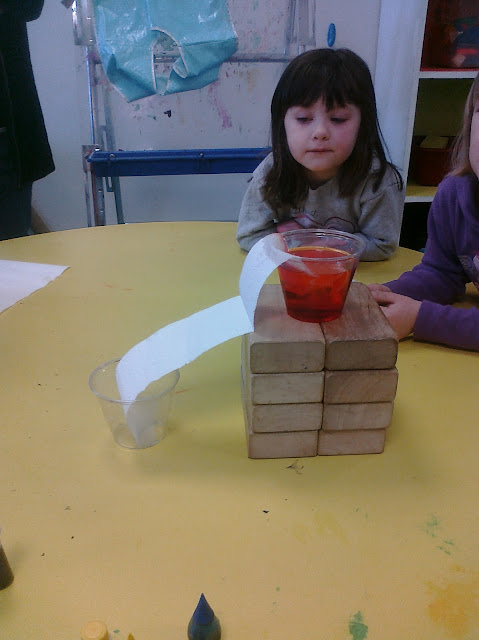Sometimes I will write a familiar poem or nursery rhyme on a sheet of poster board and allow them to take turns finding and "marking" the letter we are looking for.
Other times I have photocopies each page of a favorite story or two and let them each have a page or two. After they have marked up the pages, I hang them in order up on the wall and we read the story together, looking at the "letter" as we read.
Still other times, like we did this past week, they went through the books on the shelves showing me words that had "A's" in them, and I wrote each word on a sheet of paper. I read the word to them, and some of the children talk to me about the sound "A" makes in the particular word. This is really the only way, I believe that you can even talk about phonics of vowels; which is to say you can only talk about them in context because vowels each can make over 5 sounds each in English, and seldom follow the "conventional" phonetic rules. Other children aren't yet thinking about letter sounds, and that is okay; they will when they are ready- most of them sometime in the next six months before kindergarten. (On another note about A- in this instance it is nice to reference text to find "A" because a lower case "a" in print does not look like a written lower case "a."
No matter which of these methods I have used, they really have fun doing this activity and will point out which ever letter we most recently looked for in the hall way, in the lunch room, in the bathroom, and just about anywhere else they see print containing that letter. They are also learning letters in context of words and words in the context of books and other materials.
If you liked this post also check out letter sounds game.

















